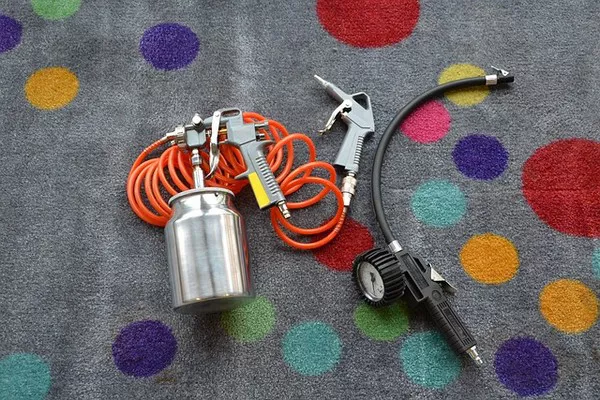Air compressors have become essential tools across a wide range of industries and applications, offering efficiency and convenience in tasks that require the use of compressed air. Among the popular choices is the Central Pneumatic air compressor, known for its reliability and performance. To harness the full potential of this tool, users must understand its features, operation, maintenance, and safety precautions. In this article, we delve into the intricacies of utilizing a Central Pneumatic air compressor effectively.
Understanding the Central Pneumatic Air Compressor
The Central Pneumatic air compressor is a versatile tool that pressurizes air for various purposes, including inflating tires, operating pneumatic tools, and even spray painting. It consists of a motor, air tank, pressure regulator, and various other components designed to facilitate the compression and distribution of air.
Operational Steps
Location and Setup: Begin by choosing a well-ventilated area with sufficient space to accommodate the compressor and allow for proper air circulation. Ensure the compressor is placed on a stable surface to prevent vibrations during operation.
Power Connection: Connect the compressor to a power source using a grounded electrical outlet. Make sure the power cord is in good condition and not prone to damage.
Pressure Regulation: Most Central Pneumatic compressors come equipped with a pressure regulator. Set the desired air pressure using the regulator according to the requirements of your task. Always refer to the manufacturer’s guidelines for recommended pressure settings.
Pressure Relief Valve: Before operation, ensure the pressure relief valve is functioning correctly. This valve releases excess pressure to prevent the tank from over-pressurizing, ensuring safety during operation.
Air Hose Connection: Connect the air hose to the compressor’s outlet using appropriate fittings. Make sure all connections are secure to prevent air leakage.
Power On: Turn on the compressor using the power switch. The motor will start running, and the tank will begin to fill with compressed air.
Tank Pressure Monitoring: Keep an eye on the pressure gauge while the compressor operates. Once the tank reaches the set pressure, the motor will automatically shut off.
Air Usage: With the tank pressurized, you can now connect your pneumatic tools or other accessories to the air hose. Ensure the tools are properly lubricated, as many pneumatic devices require lubrication for optimal performance.
Recharging: As you use compressed air, the tank pressure will decrease. When the pressure falls below the desired level, the motor will start again to recharge the tank. Be attentive to this process to avoid interruptions in your work.
Maintenance and Care
Regular Inspection: Perform routine visual inspections of the compressor, hoses, and fittings for any signs of wear, damage, or leaks. Address any issues promptly to prevent further complications.
Oil Levels: Some Central Pneumatic compressors require regular oiling. Check the oil level according to the manufacturer’s recommendations and refill as needed. Clean or replace the air filter if applicable.
Draining Condensation: Compressed air can lead to the accumulation of moisture in the tank. Periodically drain the tank to prevent rust and ensure the quality of the compressed air.
Cleaning: Keep the compressor and its surroundings clean from dust and debris. A clean environment prolongs the life of the compressor and maintains its efficiency.
Belt Tension: If your compressor uses a belt-driven system, check the tension of the belt and adjust it if necessary. A properly tensioned belt ensures efficient power transmission.
Safety Precautions
Protective Gear: When using pneumatic tools, wear appropriate safety gear such as safety goggles, gloves, and hearing protection to safeguard against potential hazards.
Proper Ventilation: Always operate the compressor in a well-ventilated area to prevent the buildup of fumes or exhaust gases.
Electricity Precautions: Avoid using the compressor in wet conditions or touching it with wet hands to prevent electric shock.
Pressure Release: Before performing any maintenance or disconnection of hoses, release the air pressure from the tank using the pressure relief valve.
Unattended Operation: Never leave the compressor unattended while it’s running. Always turn off the compressor when not in use.
Conclusion
The Central Pneumatic air compressor is a valuable tool that, when used correctly, can enhance efficiency and productivity in various applications. By following the operational steps, maintaining the equipment, and adhering to safety precautions, users can maximize the benefits of this versatile tool while ensuring their own safety and the longevity of the compressor. Remember, a well-maintained Central Pneumatic air compressor can serve as a reliable workhorse for years to come.

